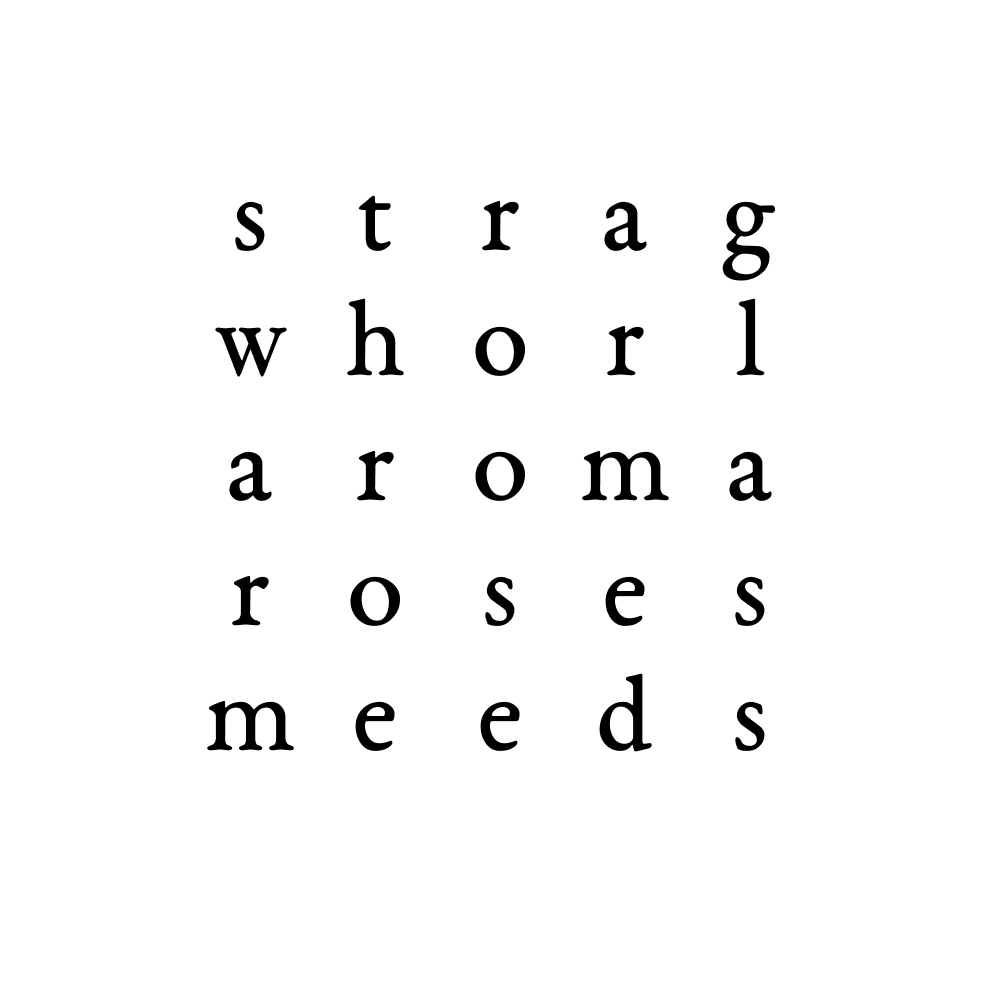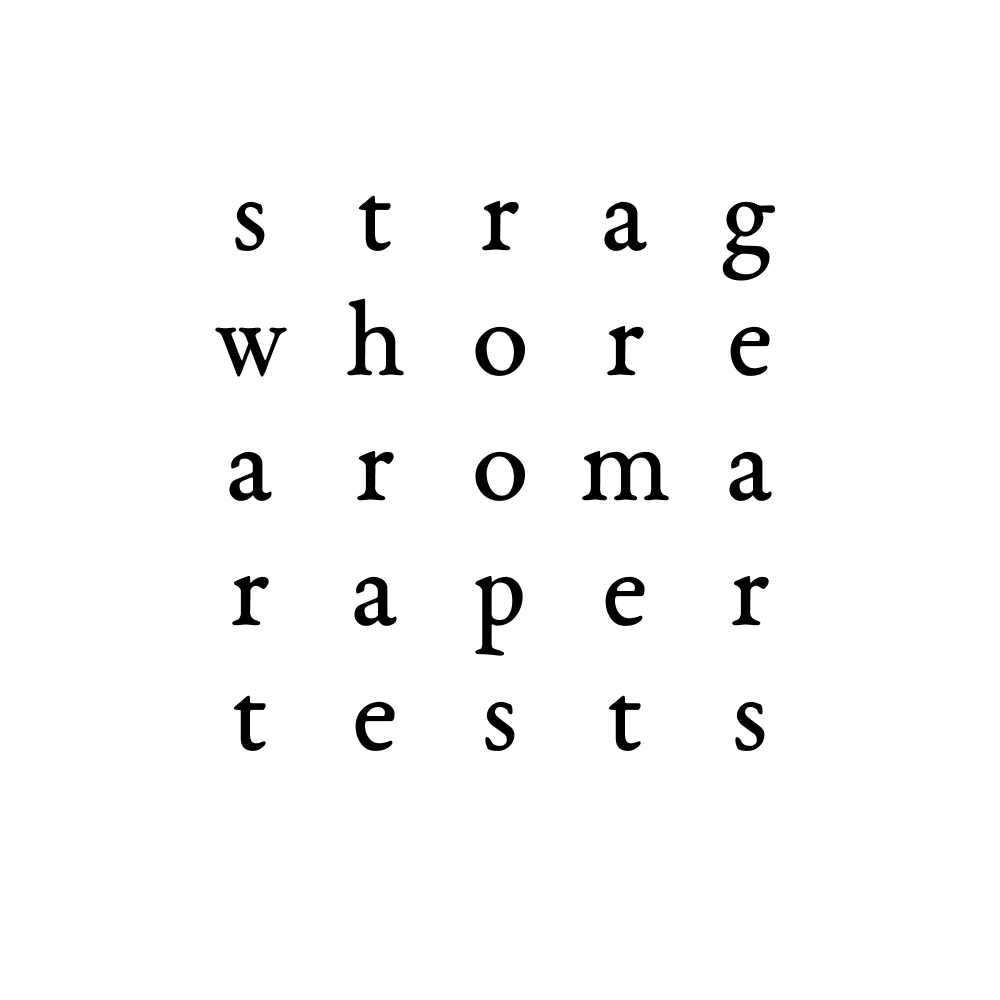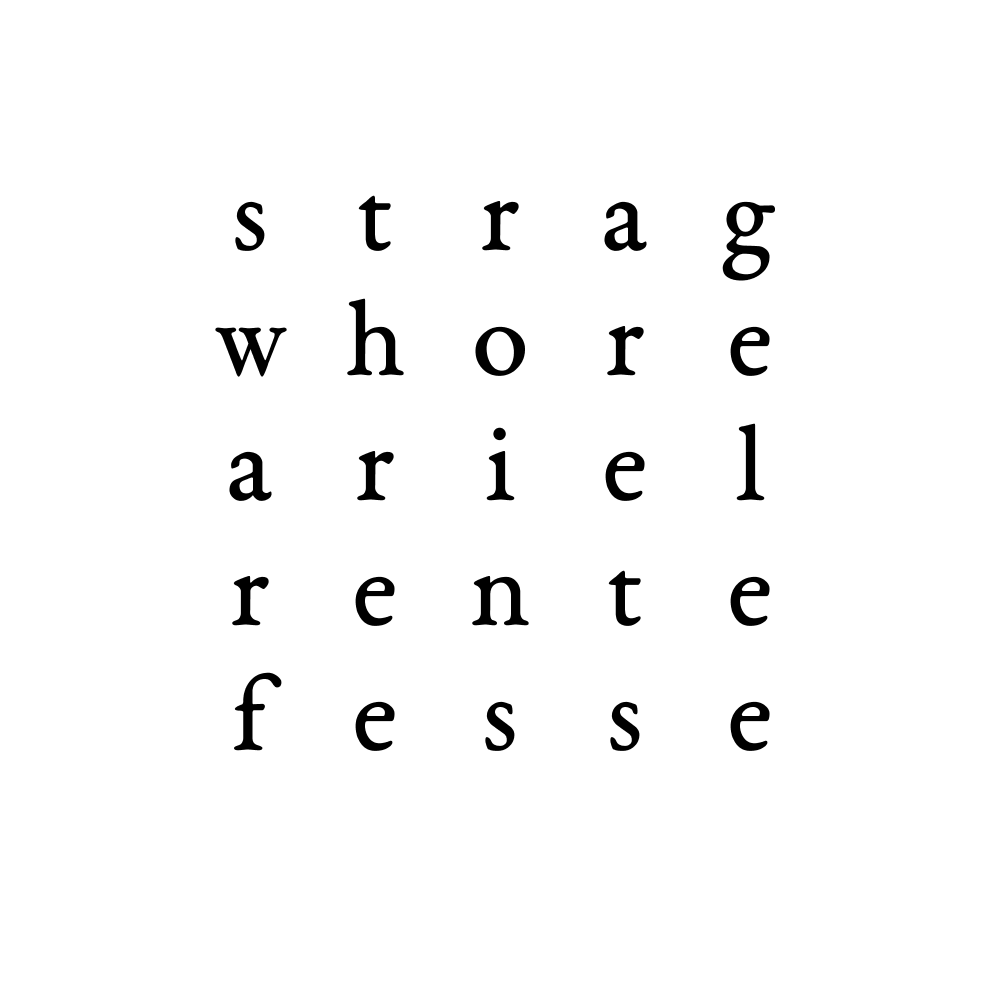Strag



Composed with words from litscape. Including diagonals.
Strag: v. “a straggler or stray” (Collins), n. “slut” (Online slang).
Whorl: n. “gen. A convolution, coil, curl, ‘wreath’ (esp. of something whirling, or suggesting a whirling movement).”, v. “intr. To form or imitate a whorl; to spiral or move in a twisting, convoluted fashion, whirl, swirl. Also fig. Frequently poet.” (OED)
Throe: n. “An intense spasm of pain experienced during labour; a uterine contraction; (also, in plural) the pain and effort of labour or childbirth. Also in figurative context.”, “An intense spasm of pain experienced immediately prior to death; (also in plural) the agony or struggle of death. Cf. death throe n.”, “More generally: any violent pain, spasm, or convulsion; esp. a mental or emotional spasm, an onrush or outburst of feeling, a paroxysm.” (OED)
Roose: n. “Boasting, bragging; an instance of this, a boast, brag, vaunt. Chiefly with make. Obsolete.”, “Now Sc. Praise; esp. exaggerated praise or commendation, flattery. Frequently with make.”, v. “intr. To boast or be proud of something. Obsolete.”, “trans. (refl.). To boast oneself; to vaunt. With of, that-clause, or infinitive. Obsolete.” (OED)
Thrae: older variant of through. (OED)
Roops: v. “intr. To utter a hoarse note or sound.” (OED)
Armet: n. “A helmet of Italian origin introduced in the early 15th cent., consisting of a steel skull extending at the rear to form a narrow neck guard, wide hinged cheekpieces overlapping at the chin, and a small hinged pointed visor.” (OED)
Swarf: older variant of swarth adj. “Dusky, swarthy, black.”, also n. “A swoon, a fainting-fit; a state of faintness or insensibility.”, “The wet or greasy grit abraded from a grindstone or axle; the filings or shavings of iron or steel. Hence, any fine waste produced by a machining operation, esp. when in the form of strips or ribbons.”, also v. “intr. To faint, swoon.”, “rare trans. with up, to make dirty with swarf.” (OED)
Groat: n. “Historical. A denomination of coin (in medieval Latin grossus, French gros, Italian grosso, Middle Dutch groot) which was recognized from the 13th cent. in various countries of Europe. Its standard seems to have been in the 14th cent. theoretically one-eighth of an ounce of silver; but its actual intrinsic value varied greatly in different countries and at different periods. (The adoption of the Dutch or Flemish form of the word into English shows that the ‘groat’ of the Low Countries had circulated here before a coin of that denomination was issued by the English sovereigns.) †a shilling, pound of groats: a Flemish money of account bearing the same proportion to the ordinary ‘shilling’ or ‘pound’ as the groat or ‘thick penny’ did to the ordinary penny.” (OED)
Roins: n. “A scab; a patch of rough, scabby skin. Also: mange.”, “intr. To growl, roar. Obsolete” (OED)
Arets: v. “trans. To reckon, count; also with complement.”, “in a good or neutral sense: To impute, ascribe, attribute to.”, “chiefly, in a bad sense: To lay to the charge of, impute as a fault to, charge upon.”, “To charge, accuse, or indict a person (of). [So commonly in Old French.]” (OED)
Rente: n. “Chiefly in France: government stock; the interest or income accruing from such stock.” (OED)
Fesse: n. “Heraldry. An ordinary formed by two horizontal lines drawn across the middle of the field, and usually containing between them one third of the escutcheon.” (OED)